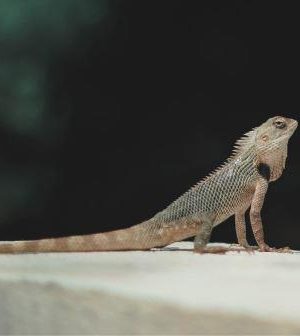- Do you subscribe to Dharma Dog Training’s Newsletter? You should.
- A Unique Campaign from The Humane Society of the United States
- Rabid bats in Omaha- Stay safe, prepared with these tips
- Springtime Activities in Omaha
- Mill Dog Monthly from Bailing Out Benji
- World Spay Day, Legislative Alert in Nebraska
- Attend the Nebraska Rescue Council’s monthly meeting this Saturday
- Five Hard-to-Ignore Reasons to Adopt!
- Paws in Pink to Benefit Breast Cancer Foundation
- VCA, Inc. Acquires MidWest Vet Specialists from Kansas State University
How to Relate and Play with Bearded Dragons

Of all reptiles available for pet lovers, bearded dragons are the most popular and among the most sought after because they make for good pets. Bearded dragons are usually called “beardies”. They have spiny scales and a beard made up of spikes. This beard puffs up and turns black when it is stressed, excited, or anxious.
Asides found in homes as pets, they are also found in zoos. You can purchase these reptiles from pet stores, breeder websites, or reptile expos. Although you can catch them in the wild and turn those to pets, captive-bred ones are easily adaptable to humans and a new environment.
Bearded dragons are alert, inquisitive, hardy but also gentle. They are native to Australia but can also be found in other countries and their natural habitat is arid woodlands and deserts. They also like to spend a lot of their waking hours on trees, bushes and also basking in the sun on rocks. They live for an average of 4 to 10 years and can grow up to about 18 to 22 inches in length.
Beardies can be any color from red to brown, green, yellow or white. They are omnivores meaning they feed on practically everything including plants, flowers, fruits, insects, and small lizards. You may read more about this interesting reptile here.
Playing with Your Bearded Dragon
Bearded dragons can survive alone and do not need to form bonds or get lonely. They do not need to interact but humans do need to and as a beardie owner, you might be wondering how you can relate to or play with your pet. Below are some of the ways you can do this.
Understand Your Pet
Understanding your pet and its behavior is important in relating with it. During breeding, a beardie may puff its beard and open wide its mouth to show dominance and this makes it look aggressive. Both males and females do this. They sometimes bob their heads too and when in submission, a bearded dragon will hold one of its front legs up while waving it slowly. Knowing and understanding this behavior will allow you to know when and how to relate to it.
Build Trust
Until a relationship or friendship develops between you and your beardie, it is most likely it will be nervous and apprehensive when you want to handle it and play. To be able to build trust, as a baby beardie, handle it frequently. It will start twisting and turning around your arm. It will also climb your hand and sit on your shoulder. To handle or pick your beardie, place your hand underneath its belly gently scooping it up and then curve your finger around it. Avoid picking by its head or tail as much as possible.
You can hold your beardie over soft surfaces such as beds, couches, or carpet. It may struggle while holding him but be sure it is calm before you let go so it does not get injured. Also, stroke his head gently to calm it, talk to it frequently and hand-feed it to build trust. Finally, ensure you are aware of what signals as fear or aggression in your beardie.
Let it Run in the Grass
Occasionally, let your pet out of its terrarium and let it run through the grass. As you do this, it is advisable to put a leash on it or let it be in an enclosure so you do not have to start looking for it all over the place or even lose it completely if it somehow gets away. The grass must however be free of any chemicals before you do this.
Let it Swim
Find a large storage tank or bowl and fill it with water that is not deeper than its elbow and allow it to swim. The water’s temperature should be around 80 degrees Fahrenheit. You can add a reptile safe conditioner and a few toys to enable it to enjoy some fun.
To learn more about bearded dragons and different things about them, visit sites like: beardeddragonguidance.com.
Conclusion
Every living thing, even when they can stay and survive by themselves, occasionally needs some attention and exposure. Avoid ignoring your beardie and leaving it alone to itself. Checking on it and playing with it often will make it fun for both of you.
Latest News
-
Join Us at Pick A Pooch 2025: A Fun-Filled Weekend for the Whole Family
A Fun-Filled Weekend for Pet Lovers and Families Alike Mark...
- Posted 1 year ago
- 0
-
Beardmore Presenting Sponsor At This Years Pick-A-Pooch event
🐾 We are thrilled to announce that Beardmore Subaru is...
- Posted 3 weeks ago
- 0
-
How Having A Pet Can Change Your Life
Having a pet can open your heart in ways that...
- Posted 2 months ago
- 0
-
How To Improve The Life Of Your Senior Pet
Do you have an elderly fur baby and want to...
- Posted 3 months ago
- 0
-
Springtime Activities To Enjoy With Your Furry Friends
Are you preparing for warmer weather and want some ideas...
- Posted 4 months ago
- 0
-
Pros And Cons Of Microchipping Your Pets
Have you considered whether your pets should be microchipped and...
- Posted 5 months ago
- 0
-
The Best New Fun Toys For Dogs And Cats
The Best New Fun Toys For Dogs And Cats Did...
- Posted 5 months ago
- 0
-
Heartfelt Ways To Show Your Pet You Love Them
Did you know there are more ways to show your...
- Posted 6 months ago
- 0



















You must be logged in to post a comment Login